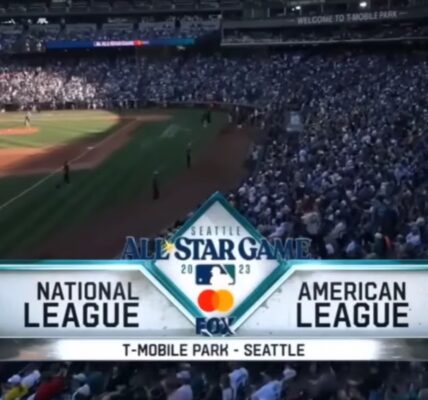In the world of baseball, securing a “hit” occurs when a batter adeptly aligns their bat with the ball, propelling it into fair play territory and subsequently reaching at least first base. This feat is accomplished without any errors or fielder’s choices influencing the play. Such a significant achievement acts as a crucial turning point, driving the team’s offensive strategy and opening up opportunities to score.
Understanding Baseball Hits and Singles
In the world of baseball, defining what constitutes a hit is not as straightforward as it may seem. A hit is a pivotal event in the game, and it’s crucial to grasp the intricacies of what qualifies as a hit and the different types of hits that can occur during a game. Let’s dive into the details of what is considered a hit, explore the concept of singles, and gain a comprehensive understanding of this fundamental aspect of the sport.
What Qualifies as a Hit?
In baseball, the rules governing hits are relatively simple, yet they hold immense significance. To be awarded a hit, a player must successfully execute a series of actions, ensuring that their contribution to the game is recognized. Here are the key criteria:
- Legal Contact with the Pitch: The batter must make legitimate contact with the pitched ball. This means they must swing and connect with the ball in a manner consistent with the rules of the game;
- Staying in Fair Territory: The hit ball must land and remain within fair territory, defined by the white lines that extend from home plate to the outfield foul poles. If the ball touches or crosses these lines, it is considered in play;
- Safe Arrival at Base: After making contact and ensuring the ball lands in fair territory, the batter must reach one of the bases safely. This involves sprinting to the base without any assistance from errors committed by the opposing team.
Note: The distance or force with which the ball is hit is not a determining factor for a hit. Hits come in various forms, each with its own significance.
The Single in Baseball
A single is a fundamental form of hit in baseball, often seen throughout the game. It occurs when the batter makes a successful hit and safely reaches first base. However, this achievement comes with specific conditions:
No Errors or Fielder’s Choice: To be counted as a single, the batter must reach first base due to their skill and the quality of their hit. If they reach first base because of an error committed by the opposing team or a fielder’s choice, it will not be ruled as a single.
The Concept of a Double in Baseball
In the dynamic world of baseball, a double is a notable achievement for a batter. This occurs when a player strikes the ball, landing it securely within the bounds of fair territory, and successfully hustles to reach second base without interruption. The key to classifying this feat as a double lies in the player’s ability to arrive at the base directly as a result of their hit, rather than through errors made by the opposing team or as a consequence of a throw aimed at another runner.
Characteristics and Importance of a Double:
- Direct Play: The batter must reach second base on the initial play, with no pauses or diversions;
- Skill Display: Demonstrates the batter’s power and precision in hitting;
- Strategic Advantage: Gaining a double puts the team in a stronger position for scoring runs.
Maximizing the Chances of Hitting a Double:
- Batting Technique: Hone skills to hit the ball with enough force and angle to reach the outfield;
- Speed and Agility: Develop quickness to cover the bases swiftly after hitting;
- Situational Awareness: Understand the field layout and position of opposing players to exploit gaps.
Understanding the Ground Rule Double
Another variant within the realm of doubles is the ‘ground rule double’. This specific play occurs when the hit ball initially lands within the playable area but subsequently exits the field, often by bouncing or rolling into spectator areas or other designated out-of-play zones.
- Typical Scenarios Leading to a Ground Rule Double:
- Bouncing into Stands: A frequent instance is when the ball lands in the outfield and then leaps into the audience stands;
- Other Out-of-Play Areas: The ball may also find its way into other non-playable zones, like dugouts or over boundary fences.
- Distinctions from a Regular Double:
- Automatic Advancement: Unlike a regular double, the ground rule double results in automatic advancement to second base;
- Fielder Limitations: No opportunity for fielders to play the ball once it exits the playable field.
The Intrigue of Triples in Baseball
In the sport of baseball, a triple represents a remarkable achievement for a batter. This occurs when the player strikes the ball, landing it within the boundaries of fair play, and successfully reaches third base before the ball is returned. The achievement of a triple is contingent on the batter’s ability to make it to third base during the same continuous play. It’s crucial to note that this accomplishment is invalidated if the batter advances to third base due to an error by the opposing team or while the defense is attempting to get another runner out. Also, discover the game-changing magic of QABS baseball – elevate your skills and dominate the diamond with our unique approach!
Triples Unveiled:
- Triples are considered one of the most challenging feats in baseball due to the need for exceptional speed and hitting precision;
- Unlike doubles, there are no special ground rules for triples they rely solely on the batter’s skill;
- Triples often require aggressive base-running and strategic decisions to outmaneuver the opposing team’s defense.
Strategies for Hitting Triples
Hitting a triple demands a unique blend of power, speed, and strategy. Here are some insights to help you chase that elusive third base:
- Gap Awareness: Similar to doubles, target the gaps in the outfield, aiming to split fielders and gain extra distance;
- Speed and Aggressiveness: Develop sprinting skills and be aggressive on the basepaths, seizing opportunities to stretch a double into a triple;
- Pitch Recognition: Sharpen your ability to recognize favorable pitches and capitalize on them to drive the ball deep.
Understanding the Home Run in Baseball: A Dynamic Aspect of the Game
- A Display of Sheer Power: The home run is celebrated as one of the most exhilarating aspects of baseball. It embodies the raw power of the batter and often serves as a pivotal moment that can energize an entire team;
- Scoring Dynamics: To achieve a traditional home run, the player must hit the ball so it sails over the outfield fence between the foul poles. This feat not only grants the batter a run but also scores any teammates who were stationed on the bases.
Factors Influencing Home Runs
Ballpark Variations: It’s crucial to recognize that different stadiums have unique ground rules affecting home runs. For instance:
- In certain ballparks, hitting the ball in specific areas might automatically count as a home run;
- The role of fence tops varies; in some fields, they’re considered in play, while in others, a ball hitting the fence top could be declared a home run.
Insight: Teams and players should familiarize themselves with these nuances before the game to strategize effectively.
The Rarity of the “Inside the Park” Home Run
A Test of Speed and Strategy: The “Inside the Park” home run, though less common, is a remarkable display of both strategy and athleticism. This occurs when:
- The batter hits the ball to the outfield, and it strikes a wall or an obstacle;
- The ball deflects to a less accessible part of the outfield, challenging the fielders.
Tip: The key for the batter is to sprint through the bases with exceptional speed.
A Race Against Time: Success hinges on the batter’s ability to round all bases and reach home plate before the outfielders can relay the ball back. This type of home run is not just a score; it’s a thrilling spectacle showcasing the player’s agility and the fielding team’s coordination.
Mastering the Art of Pinch-Hitting in Baseball
In the sport of baseball, the concept of a pinch-hit involves replacing the scheduled batter with an alternative player during a game. This strategic move, often employed by a team’s manager, can be influenced by various factors and is primarily driven by the likelihood of the substitute player achieving a successful hit. The decision to utilize a pinch hitter can hinge on numerous considerations, including the substitute’s batting skills, the type of pitcher they’re facing, and the game’s current circumstances.
Key Points about Pinch-Hitting:
- Strategic Decision: Managers carefully weigh the strengths and weaknesses of their players before choosing a pinch hitter;
- Match-up Advantage: Often, a pinch hitter is selected to exploit specific match-ups against certain pitchers, like a left-handed batter against a right-handed pitcher, or vice versa;
- Fresh Legs: A fresh player can bring renewed energy and focus, especially late in the game;
- Injury or Fatigue: Sometimes, a pinch hitter is used when the regular batter is injured or fatigued;
- Specialization: Some players are known for their proficiency as pinch hitters, often delivering key hits in crucial moments.
One of the most iconic examples of a successful pinch-hit occurred in the 1988 World Series. In Game 1, Kirk Gibson, despite injuries, was called upon as a pinch hitter and famously hit a home run that became a defining moment in baseball history. This instance highlights the potential impact a pinch hitter can have, turning the tide of a game or even a series.

Understanding Baseball Statistics: Hits, Walks, Errors, and More
The Nature of Walks in Baseball
- Definition: In baseball, a walk occurs when a batter receives four balls outside the strike zone, allowing them to advance to first base;
- Why Walks Aren’t Hits: Unlike hits, walks are not recorded as official at-bats. This is because they represent a strategic decision by the pitcher, rather than a direct result of the batter’s skill in hitting the ball;
- Impact on Player Stats: Walks can positively influence a player’s on-base percentage, a key metric evaluating a player’s ability to reach base, but they don’t contribute to batting averages since they’re not counted as at-bats.
Errors Versus Hits in Baseball
- Defining an Error: An error in baseball is marked when a fielder misplays a ball in a way that allows a batter or runner to advance one or more bases;
- Error vs. Hit: An error is not counted as a hit. Instead, it indicates a missed opportunity for an out that would have likely occurred without the fielder’s mistake;
- Statistical Implications: While reaching base on an error can be beneficial for the batting team, it doesn’t count towards the batter’s hitting statistics, as it is considered a fielding team’s fault.
The Most Common Hit: The Single
- What is a Single? A single is a hit that allows the batter to reach first base safely;
- Popularity: Singles are the most frequent type of hit in baseball, largely due to their simplicity and the higher probability of successfully reaching base compared to more challenging hits like doubles, triples, or home runs;
- Strategic Value: Singles can be a crucial part of building an inning, allowing teams to advance runners and create scoring opportunities.
Fielder’s Choice: Not Classified as a Hit
- Understanding Fielder’s Choice: This occurs when a fielder, upon fielding the ball, opts to put out another runner instead of the batter;
- Why It’s Not a Hit: In a fielder’s choice situation, the batter would likely have been out if the fielder had chosen to target them. Therefore, it’s not considered a testament to the batter’s skill at achieving a hit;
- Effect on Game Strategy: Fielder’s choice plays are significant in the strategic landscape of baseball, as they involve quick decision-making and can shift the momentum of an inning.
Conclusion
In conclusion, the concept of a “hit” in baseball encapsulates a pivotal moment where a batter’s precision and skill come into play. By propelling the ball into fair territory and reaching at least first base, free from the interference of errors or fielder’s choices, a sense of momentum is ignited within the game’s offense. This, in turn, paves the way for the creation of promising scoring opportunities, making it a fundamental and exhilarating element of America’s favorite pastime.




